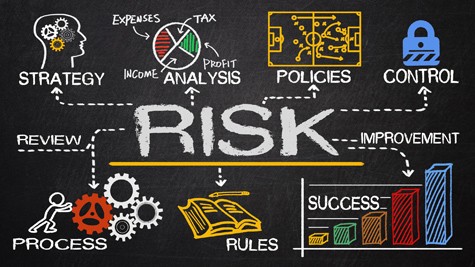Fax: 07 5452 7301
Email: nathan@ffsolutions.com.au
Latest News
Time to check your risk exposure? For equity investors, 2017 was an epic year. And it came on the heels of an historic bull market in global stocks stretching back to the spring of 2009.
So far 2018 has been epic, but in a different way. Markets in North America, Europe, and the Asia-Pacific region fell sharply in early February, rebounded, fell again, rebounded, and remain somewhat unsettled. Given this backdrop, now might be a good time to check your portfolio's asset allocation—that is, how your money is divided among shares, bonds, and short-term reserves (cash). Thanks to the equity market's long rally, there's a chance your allocation to shares may be greater than you originally intended. What's your comfort level? Owning a higher percentage of shares might be a good thing—especially if the market resumes its ascent. But if the market heads in the other direction, it puts your portfolio at risk. Because no one knows which way the market will go, Vanguard suggests choosing a mix of equity and bond investments that you'd feel comfortable with over the long run and rebalancing back to that mix when market movements veer you off course. Here's an example of how the markets can change your risk level: Based on market performance alone, an investor who owned a 60 per cent /40 per cent mix of U.S. shares and bonds in early 2003 would have drifted to a 75 per cent /25 per cent mix four years later, just as the global market was heading for a hard fall. History may or may not repeat itself. But you can keep your risk level constant by rebalancing your portfolio. Guidelines for rebalancing We recommend that you consider rebalancing once a year or after your allocation shifts by 5 percentage points or more. If you haven't rebalanced before, here's how to get started:
Put it on autopilot It takes discipline to keep your portfolio balanced. After all, it often means moving away from stocks after they've provided high returns. If you're having a hard time putting a rebalancing plan into practice, consider these options: Invest in a balanced or multi-asset fund. You can choose from different types of balanced funds depending on your needs. Many funds provide a mix of equities and bonds that are professionally managed to maintain a steady asset allocation. Contact an advisor. A professional financial advisor can rebalance your portfolio for you. He or she should compare your current asset mix with your target every few months to help you stay on track to meet your long-term goals. Buying low and selling high After equities have a great year, it can feel wrong to consider trading them for bonds. Instead, investors tend to get carried away, often investing more money in funds as prices climb. But the oft-repeated advice is to "buy low and sell high." That's why rebalancing works—it encourages you to cut back a bit on a rising investment and buy a bit more of the lagging category.
|

